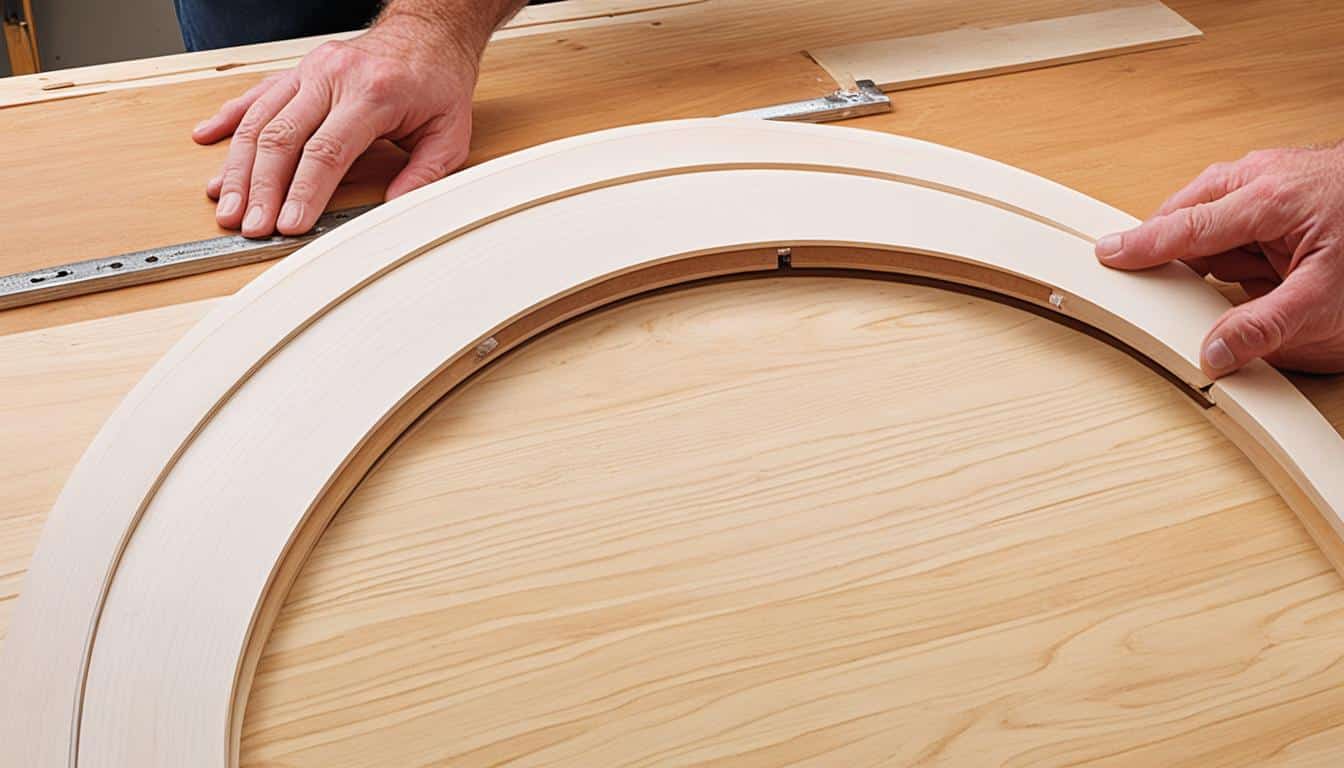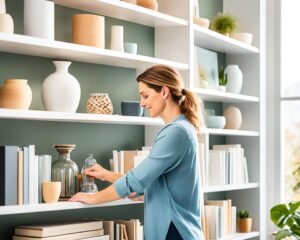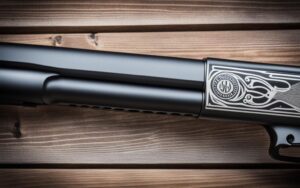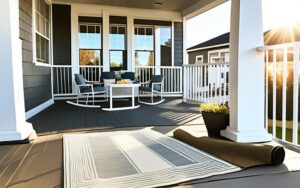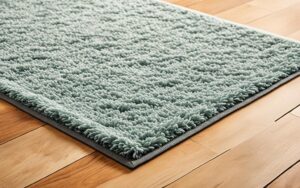If you’re looking to elevate the design of your cabinets or furniture, curved cabinet doors are an excellent choice.
Not only do they provide added stability, but they also create a visually appealing focal point that is sure to impress.
In this article, I will guide you through the step-by-step process of crafting curved cabinet doors, explore various techniques for making them, highlight their advantages, and provide tips for finishing them to perfection.
Whether you’re a woodworking enthusiast or a DIY enthusiast, learning how to make curved cabinet doors unlocks a world of creative possibilities for your projects.
Let’s dive in and discover the secrets behind the art of crafting these magnificent doors.
Techniques for Making Curved Cabinet Doors
Making curved cabinet doors requires specific techniques and materials to achieve the desired shape and stability.
In this section, I will explore several methods commonly used in woodworking to create beautiful and functional curved doors.
Coopering
Coopering is a traditional technique that involves cutting edges into proper angles and ensuring a well-milled surface to avoid any defects. This method is commonly used to make curved cabinet doors.
By carefully shaping and joining individual pieces of wood, craftsmen can create elegant and sturdy doors.
Laminations
Another popular technique for making curved doors is laminations. This process involves layering multiple thin and flexible sheets of plywood or resawn veneer over a form to create a curved substrate.
By applying pressure and adhesive, the layers bond together to form a strong and resilient curved panel.
Shopmade Solid-Wood Core
A shopmade solid-wood core is another option for creating curved cabinet doors. This technique involves sandwiching a solid-wood core between veneers.
The first layer of veneer on both sides is oriented perpendicular to the core’s grain, creating a stable panel that resists warping and provides excellent durability.
This method can be adapted to various projects and provides added versatility in design.
Veneer-Core Plywood
Veneer-core plywood is a type of plywood that consists of thin veneers glued together. It can be used as a substrate for curved doors by bending and shaping it to the desired form.
Veneer-core plywood offers stability and can be cut and shaped to suit different forms, making it a viable option for making curved cabinet doors.
Lumber-Core Plywood
For curved and tapered surfaces, lumber-core plywood is an excellent choice. It consists of a solid lumber core with veneer faces.
This type of plywood provides stability and allows craftsmen to cut and shape it according to their specific design requirements.
Lumber-core plywood is a reliable option for creating curved cabinet doors that are strong, durable, and aesthetically pleasing.
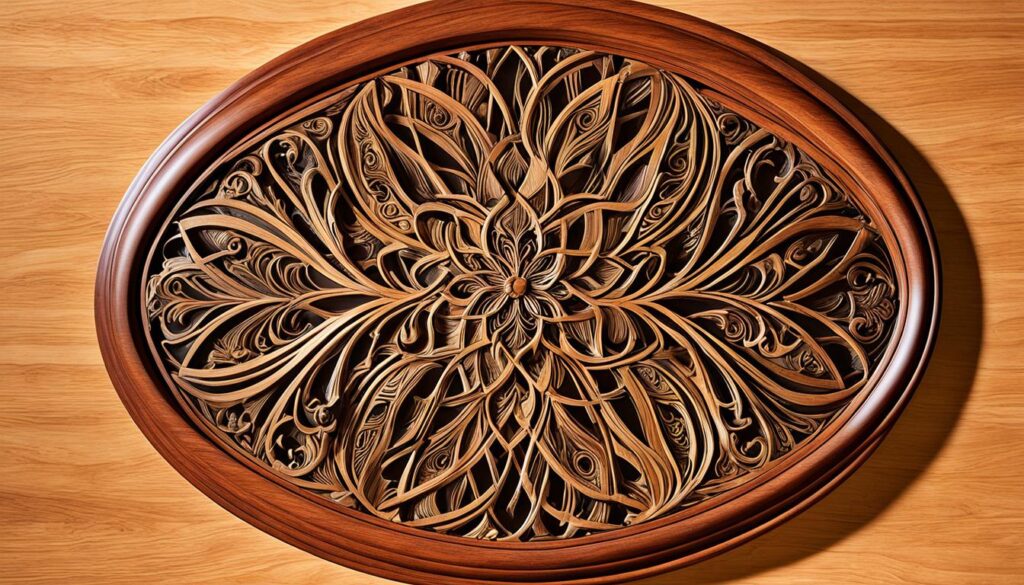
Incorporating these techniques into your woodworking projects will enable you to create stunning curved cabinet doors with precision and craftsmanship.
Advantages of Curved Cabinet Doors
Curved cabinet doors offer a range of benefits that make them a popular choice for both functional and aesthetic reasons. Let’s explore the advantages of incorporating curved cabinet doors into your interior design projects.
Stability
One significant advantage of curved cabinet doors is their inherent stability. These doors are constructed using precise techniques and high-quality materials, which prevent warping or twisting over time.
With their solid build, curved cabinet doors ensure that your cabinets remain sturdy and durable for years to come.
Aesthetics
Curved cabinet doors add a touch of elegance and uniqueness to any cabinet or furniture piece.
Whether you’re aiming for a modern or traditional look, the graceful curves of these doors create a visually appealing focal point in any room.
The smooth and flowing lines of curved cabinet doors contribute to a sense of sophistication, elevating the overall aesthetics of your space.
Unique Design
By incorporating curved cabinet doors into your design, you can achieve a distinctive and one-of-a-kind look.
The ability to customize the shape, size, and finish of these doors allows you to create a design that reflects your personal style and complements the overall theme of your space.
Whether you prefer a bold and dramatic curve or a subtle and gentle arc, the options are limitless, giving you the freedom to create a unique design statement.
Versatility
The versatility of curved cabinet doors is another notable advantage. These doors can seamlessly fit into different spaces, from kitchen cabinetry to built-in shelves or entertainment units.
Their curved design can also complement various interior styles, whether it’s a contemporary, transitional, or traditional decor.
The adaptability of curved cabinet doors allows you to explore different design possibilities and effortlessly enhance the visual appeal of any room.
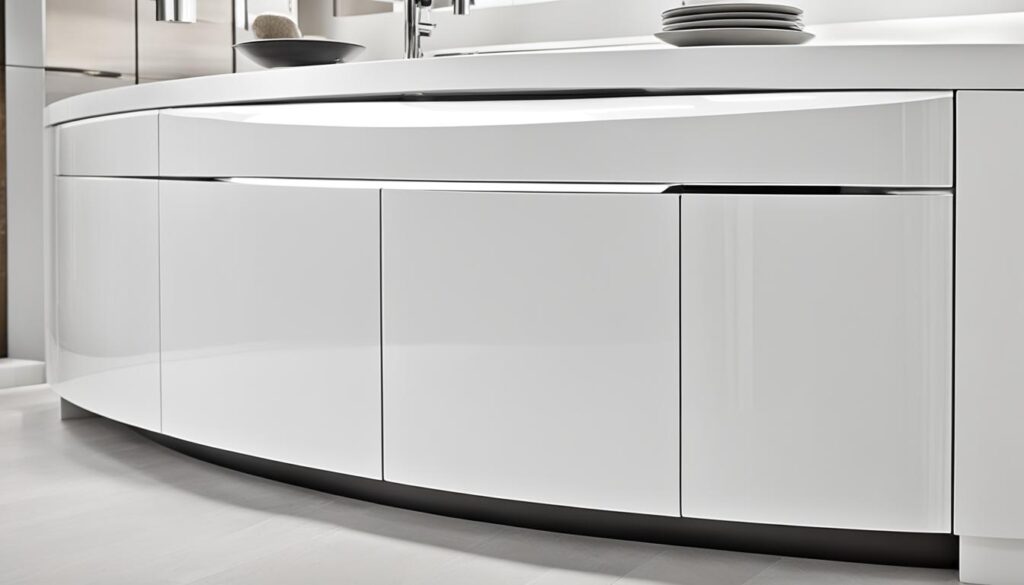
Tips for Finishing Curved Cabinet Doors
Once your curved cabinet doors are completed, it’s time to give them a beautiful finish. The finishing process not only enhances the overall appearance but also provides protection against wear and tear.
There are several techniques you can use, including painting, varnishing, staining, and sealing.
Painting is a popular choice for achieving a smooth and uniform finish. It allows you to add color to the doors while covering any imperfections.
Choose a paint that complements your interior design and apply it evenly using a brush or spray gun.
Varnishing is another option that brings out the natural beauty of the wood grain. It adds a protective layer that prevents moisture damage and gives your cabinet doors a glossy or satin finish.
Apply the varnish using a brush or wipe-on method, following the manufacturer’s instructions.
If you prefer a more dramatic look, staining is a great choice. It adds depth and richness to the doors, highlighting the natural characteristics of the wood.
Before staining, make sure to prepare the surface by sanding it smooth and clean. Apply the stain using a brush or cloth, wiping off the excess for an even tone.
To ensure the longevity and durability of your curved cabinet doors, sealing is essential. It helps protect the doors from moisture, temperature changes, and other environmental factors.
Choose a sealant that is compatible with your chosen finish and apply it according to the instructions.
FAQ
How Do I Make Curved Cabinet Doors?
To make curved cabinet doors, you will need to create a plan and gather the necessary materials.
Use a template or draw the curved shape onto the MDF or wood, cut out the pieces, and assemble them using glue and tape. For more detailed instructions, refer to the step-by-step guide provided in Section 1.
What Techniques Can I Use To Make Curved Cabinet Doors?
There are several techniques you can use to make curved cabinet doors, including coopering, laminations, using a shopmade solid-wood core, veneer-core plywood, and lumber-core plywood.
Each technique has its advantages and suitability for different projects. Find more information in Section 2.
What Are The Advantages Of Curved Cabinet Doors?
Curved cabinet doors offer added stability, aesthetics, unique design, and versatility.
They are constructed with precise techniques and materials to prevent warping or twisting, adding a touch of elegance and uniqueness to any cabinet or furniture piece. Explore the benefits of curved cabinet doors in Section 3.
How Should I Finish Curved Cabinet Doors?
Once the curved cabinet doors are completed, you can finish them using various techniques such as painting, varnishing, staining, or sealing.
Each finishing method provides its own advantages in terms of enhancing the appearance, highlighting the natural beauty of the wood, adding color depth, and ensuring durability. Learn more about finishing options in Section 4.
